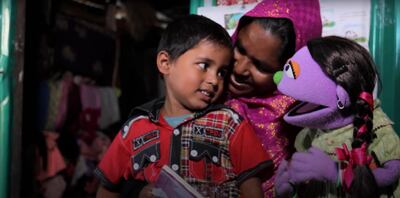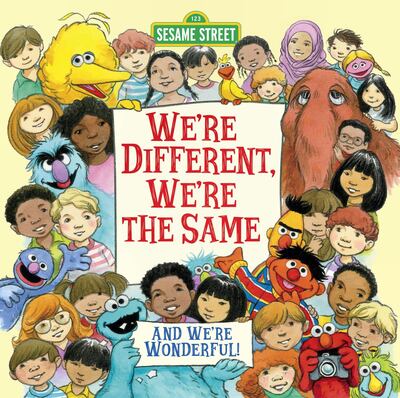Growing up in Dubai in the 1990s, I remember being glued to the television whenever Iftah ya Simsim, the Arabic version of Sesame Street, would air. I don't remember much of the actual content of the show (quick note to the YouTube generation: you couldn't just queue up whatever you wanted to watch on-demand, you had to catch it when it was on the air), but I can still conjure the sound of the opening musical theme, which played over images of children running through ancient sites and generally milling about. I distinctly remember Kaaki, the Arab version of Cookie Monster, and the parrot Malsoon, whom I believe was created specifically for the Arabic version of the show. My 20-month-old son owns a Cookie Monster stuffed toy, which we have named Kaaki.
Most of the cartoons we watched as children were dubbed animations from Japan and elsewhere. There was the eponymous Captain Majid, about a footballer who dreamed of playing in the World Cup, or Transformers-esque shows like Grendizer. There was Hekayat Alamiya (stories from around the world), which showed us fables and folklore from a variety of cultures.
The common theme among them was that they were all in Arabic. I remember occasionally watching the cartoon Looney Tunes in English, as well as Tom and Jerry, but for the most part my one hour every afternoon in front of the TV was dominated by characters whose language was my mother tongue. The language I spoke with my family. The language I dreamed in.
I appreciate this more as I struggle to find children's books or stories to read to my son, or Spotify playlists of the Arabic nursery rhymes that I recall from my childhood. I am profoundly disorientated as I contemplate the world he lives in, even as my mind is transported to another realm when the Sesame Street theme fades away.
I was heartened, therefore, to read earlier this week that Sesame Street was launching Rohingya muppets, six-year-old twins called Noor and Aziz, for refugee children who were displaced during the brutal ethnic cleansing in Myanmar. The new muppets were announced a little over a year after Sesame Street launched three new Arab characters, Basma, Jad and Mazooza, who were aimed at children displaced by war in the Middle East. The new show in which the characters would debut was dubbed Ahlan Simsim (Welcome Sesame), a sentiment that contrasted with the feelings of rejection many of the children suffer during their displacement.
These initiatives are laudable for many reasons, chief among them the potential benefits to the mental health of children affected by conflict. Mental health is a woefully under-reported topic in the region, and often untreated, largely because the focus is often on the immediate alleviation of physical suffering during war. Counselling sessions and art therapy can seem like a luxury when people need food packages or are living under bombardment.
Yet the effects of doing nothing for the mental health of those in distress would be catastrophic. We risk losing the generation growing up in conflict countries such as Syria, Yemen and Libya, or those who are living in refugee camps or as minorities in host communities. These people are often subjected to discrimination and violence. Over the course of my reporting in the region, I was privileged to meet men and women working with vulnerable children suffering from myriad mental health disorders and issues as a consequence of war. This ranged from girls forced to marry early, to siblings who witnessed the death of their mother and the wounding of their father in war. Children in these circumstances often needed a lifeline, some signifier that they were not alone, that their stories would be heard in a safe space. Drama and art therapy were useful in getting them to talk about what troubled them.
The ability of Sesame Street to tell these familiar stories to children who suffered through war's atrocities can be a boon to their mental health, a signifier that they are not alone, that they are heard and understood. It is an avenue for them to grapple with their trauma, through a lens they understand.
Beyond the immediate benefits to the children, there is beauty in the idea of representing and portraying the vast richness of the human experience. Our societies are tapestries, a reality you would not have been able to discern from a casual examination of the cultural products we consume. It is empowering to see yourself in art, music, stories, to feel heard, to realise that others share your struggle. That is the promise of Sesame Street's Rohingya characters.
The aforementioned Hekayat Alamiya, originally a Japanese manga series, was one of my favourite cartoons growing up. One segment of the opening song, roughly translated, goes like this: "From all the countries of the world, from all spots on the Earth / Many stories told / So we can learn of humans, as all here are neighbours."
Perhaps, through the telling of stories, we can learn to live together again.
Kareem Shaheen is a veteran Middle East correspondent in Canada and a columnist for The National



